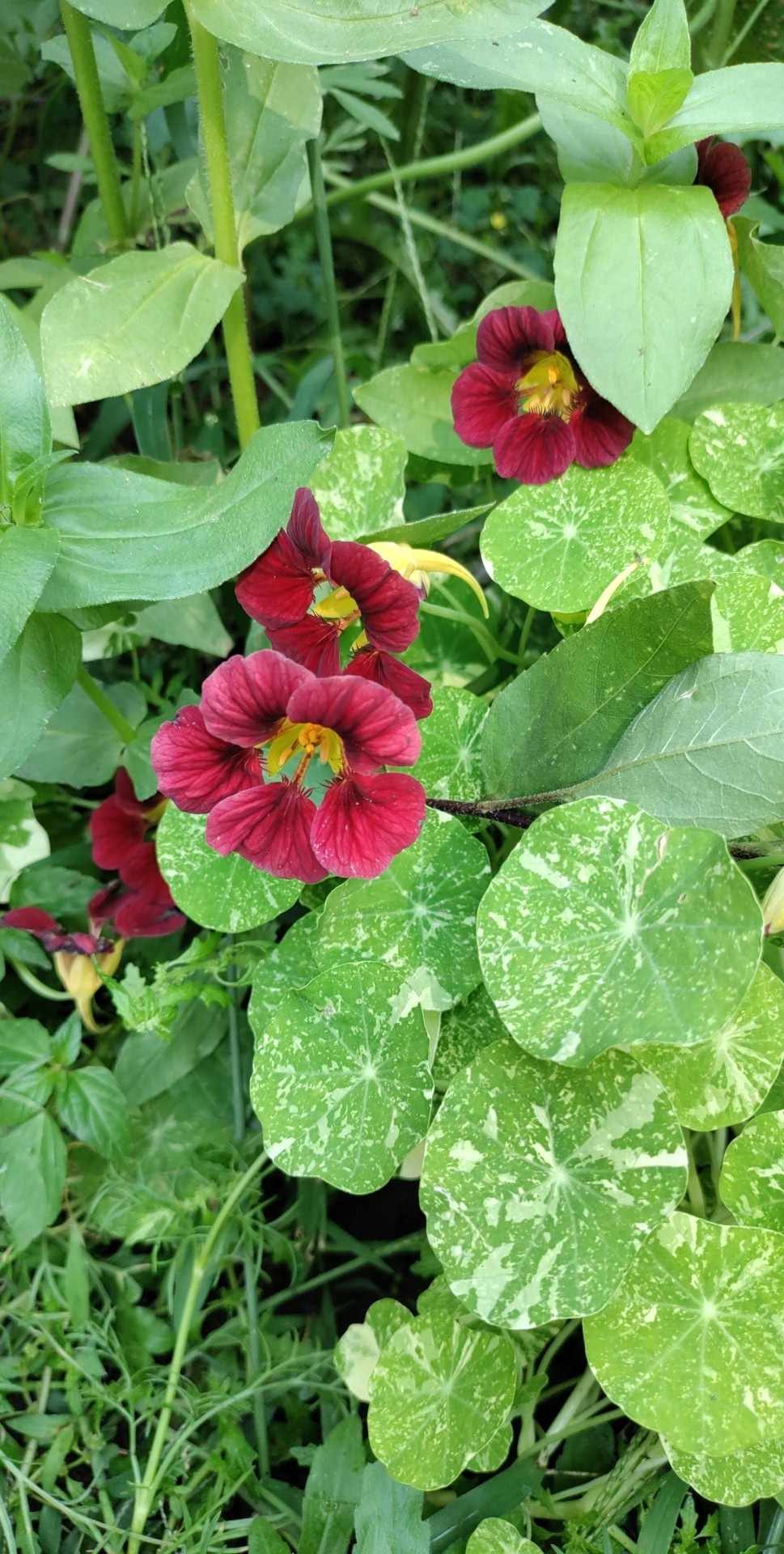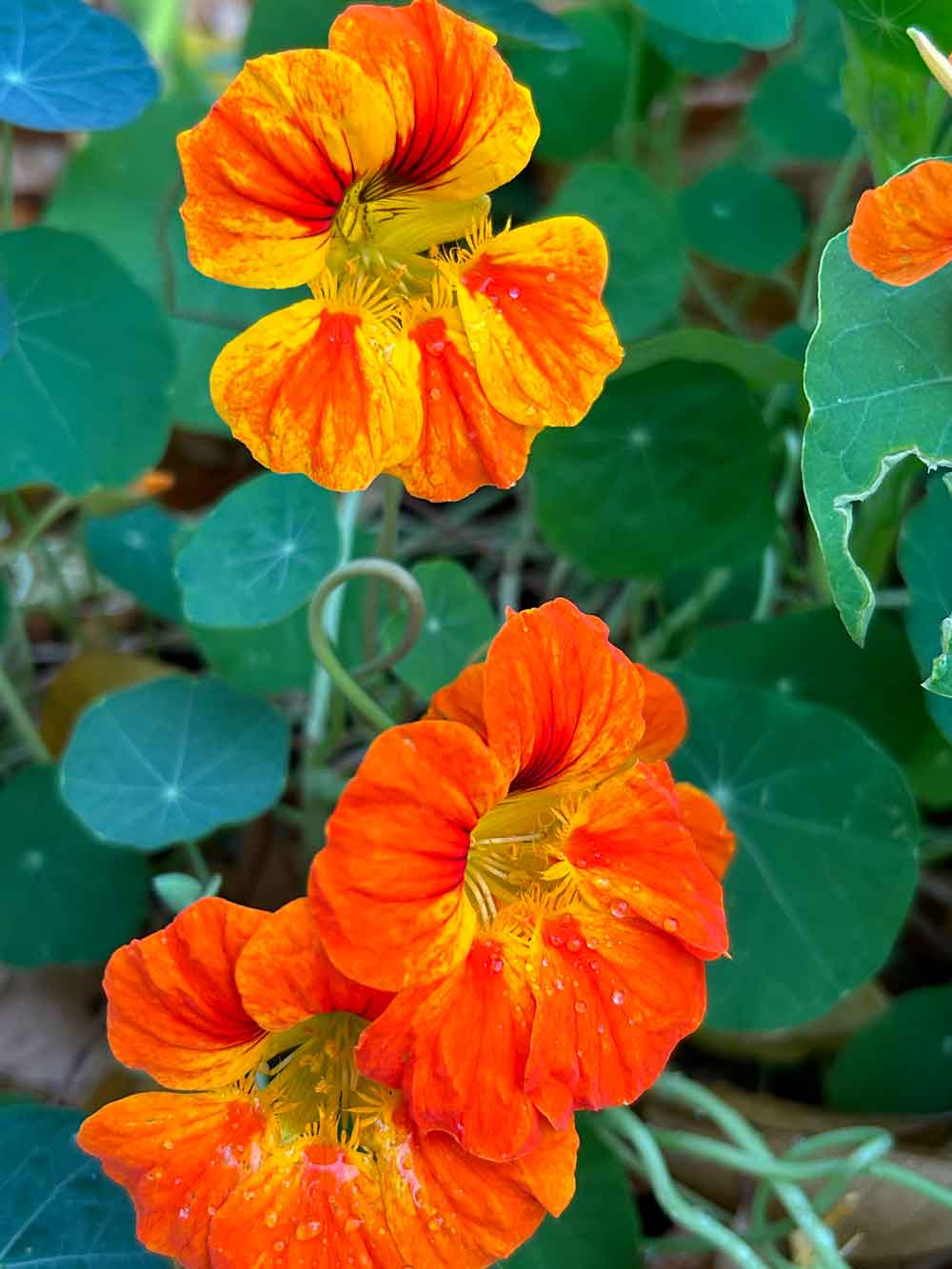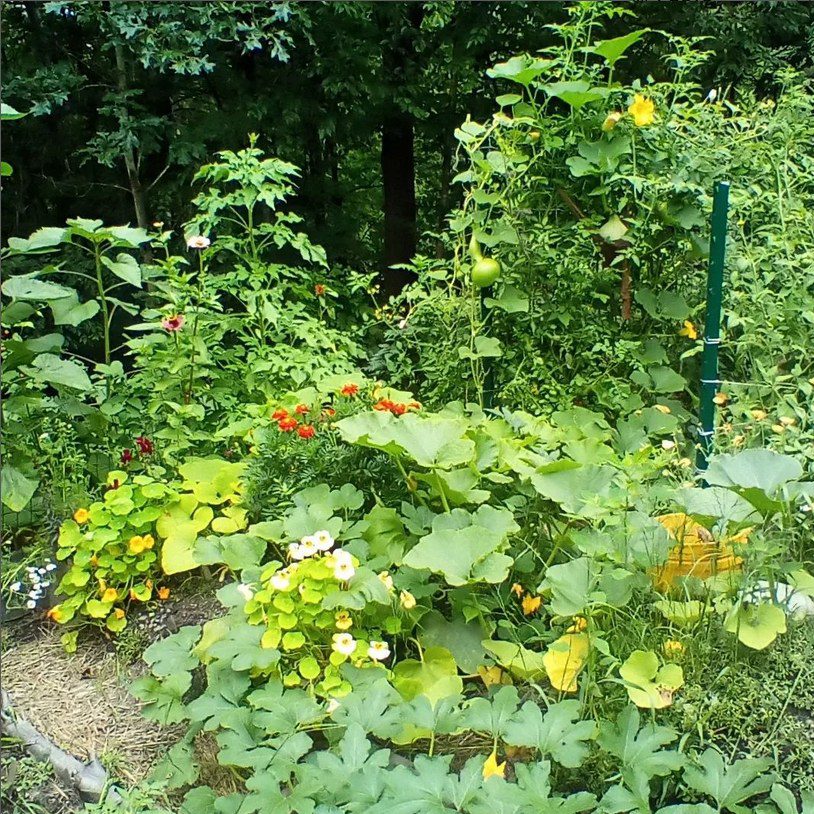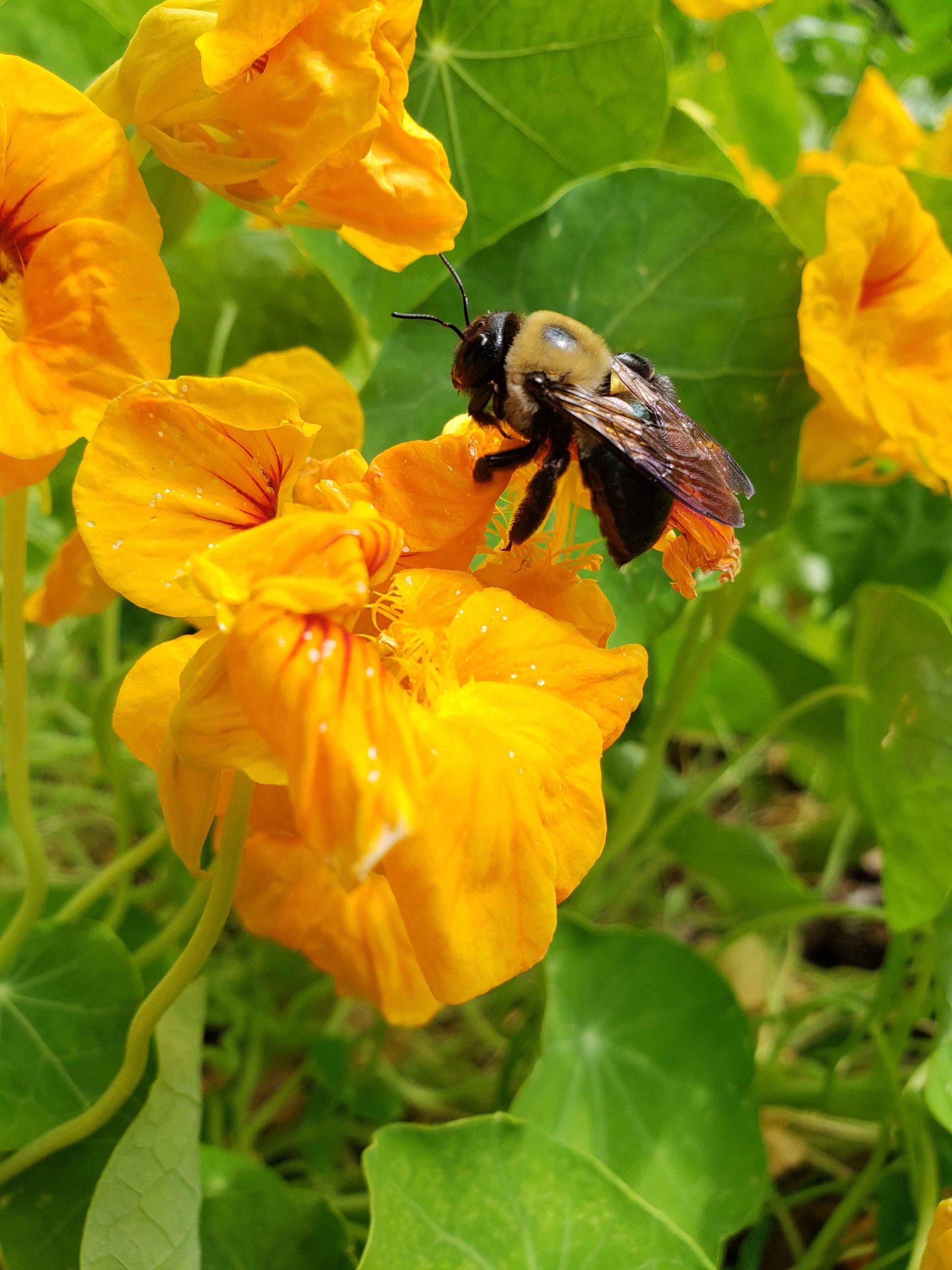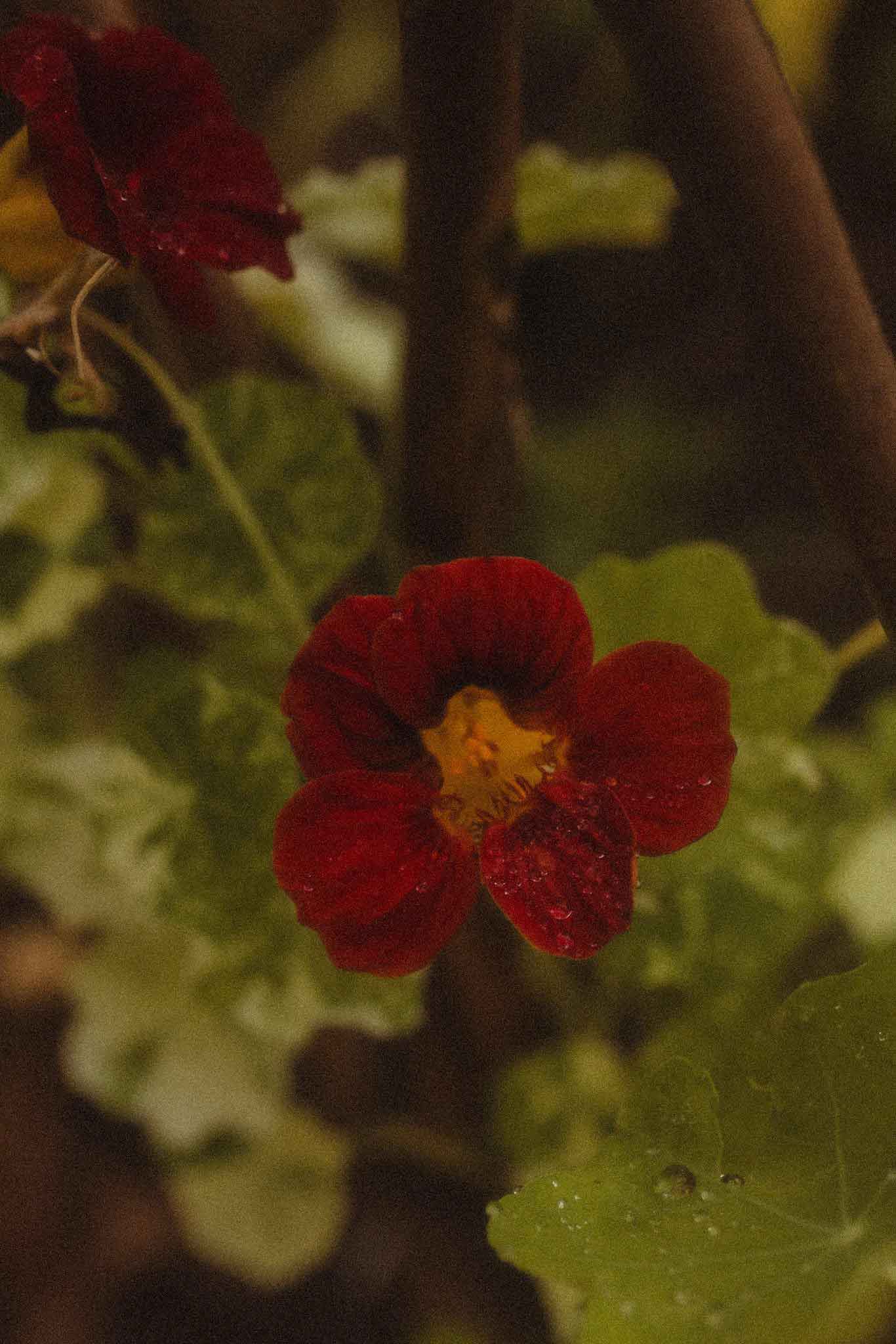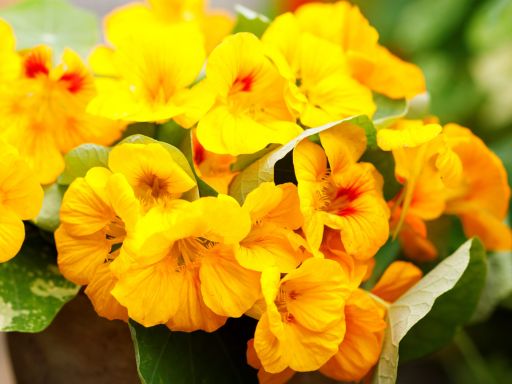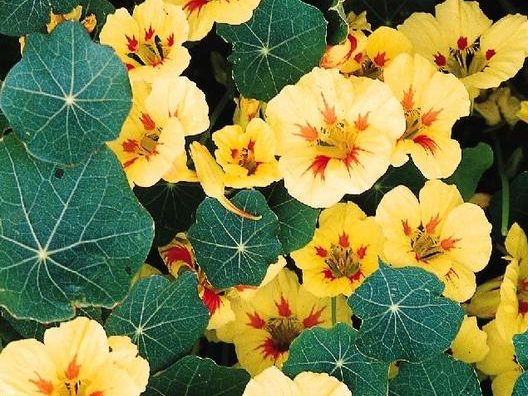About Nasturtium
These jewel-like flowers, with their flat, round leaves and bright flowers, grow well in containers or as pollinator attractors in vegetable gardens. Beautiful and beneficial, nasturtiums are often planted as companions to vegetables as they can help to repel harmful pests. Not only do nasturtiums produce gorgeous blooms, but the blooms and leaves are also edible and have a sweet, peppery taste. They work best in summer salads giving a radish-like taste and elevating the look of your salad from mere food to culinary art!
Where to Plant Nasturtium Seeds
Nasturtiums perform best in full sun, in average, slightly acidic, well-drained soils. Light shade is tolerated in hot summer areas. Nasturtiums do better in soil of moderate to low fertility. Nasturtiums do equally well in containers and in garden beds. Some of the trailing varieties show off their beauty draping over the sides of pots or walls. They also like to ramble over hillsides. Consider planting them in your vegetable garden as well, as they draw aphids and other unwanted pests away, yet attract beneficial pollinators.
When to Plant Nasturtium Seeds
Sow seeds outdoors after all danger of frost has passed or indoors four to six weeks prior to your last spring frost date
How to Plant Nasturtium Seeds
Before planting, we recommend soaking seeds for four to eight hours to encourage germination. Learn more about soaking seeds here. Sow seeds about ½ inch deep and 10 to 12 inches apart in the garden if direct sowing.
For indoor planting, sow seeds in potting mixture ½ inch deep, and water well. Keep the soil moist and at 70 to 75°F consistently. The seeds will germinate and emerge in 10 to 14 days. As soon as you see growth, provide plenty of light by a sunny window or with the use of grow lights. Leave lights on for 16 hours a day, turning off for eight hours. Fertilizer can be used when seedlings reach three to four weeks old, but it is not necessary. After all danger of frost has passed, transplant hardened-off seedlings with care, as nasturtium roots easily damage during handling. Read more about hardening off here.
How to Care for Nasturtium
Water regularly throughout the growing season, but be careful not to overwater. Deadhead your plants to prolong blooming. If maintaining your nasturtiums in containers, they’ll need to be trimmed back occasionally to promote new foliage. Leaves and flowers can be harvested anytime, using scissors to avoid damaging the plants.


